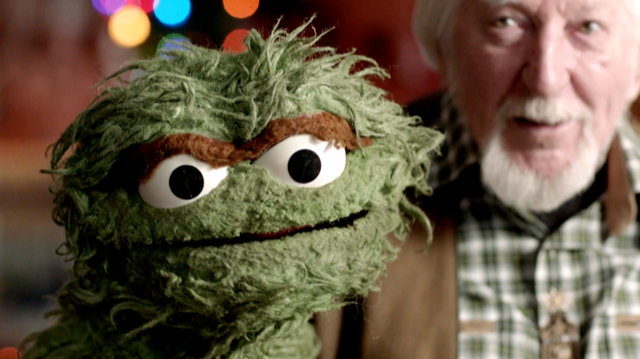When Sesame Street first hit the public-television airwaves, in 1969, the target audience of kids aged three to five took to it immediately. But older kids, and even college kids, watched it too: If its goal had been to “sell” preschool kids on learning their alphabet and numbers, the way advertising sold goods to consumers, its methods of doing so were so hip and entertaining that everyone wanted a look. Its set, a semi-realistic ramshackle street inspired by real-life late-1960s Harlem, served as an anchor for a kind of groovy learning variety show for kids, featuring neo-psychedelic animated segments in which numerals and alphabet letters danced and squiggled across the screen, not to mention a full neighborhood of performers—both human and Muppet—that, for lots of kids, would come to be a de facto family.
The marvelous documentary Street Gang: How We Got to Sesame Street—directed by Marilyn Agrelo and based on a book by Michael Davis—tells the story of how the show came about, a kind of perfect storm in which a group of extraordinarily gifted people found their way to one another: They include Jon Stone, the show’s longtime writer-director, who helped shape its vision; Joan Ganz Cooney, a producer who had no experience in children’s television but who quickly saw the potential for a show like this one; and Lloyd Morrisett who, with Cooney, formed the Children’s Television Workshop, the first step in figuring out how to use the techniques of advertising, especially jingles, to help kids learn. Add to that a cast of human personalities (including Matt Robinson, who originated the character of Gordon in the show’s early seasons, and Will Lee, who played storekeeper Mr. Hooper) and Muppets (the creation of genius puppeteer Jim Henson), and a landmark of television was born.

Street Gang blends vintage behind-the-scenes footage with current-day interviews with the surviving players, who include Cooney and Morrisett. The children of Stone, Henson and the show’s chief composer and musical director, Joe Raposo, also appear on-camera to talk about their fathers, revealing that putting the show together was all-consuming work: Henson’s son notes that his father would sometimes work for four days straight. The miracle is that they made it look so easy, although it’s clear this group of innovators also had a blast. Vintage footage shows Henson and his longtime sidekick and partner, Frank Oz, manipulating characters like Bert and Ernie, while also showing us the effect on the TV monitor. It’s clear how physically challenging this work was, though it’s also obvious that Henson and Oz, whose friendship was close but also a little prickly, loved their work beyond measure.
Read more reviews by Stephanie Zacharek
The Muppet outtakes in Street Gang are gold, as is interview footage of the late Carroll Spinney talking about how he developed two of the show’s most well-loved characters, Big Bird and Oscar the Grouch. (He was clearly a gentle soul, but Oscar’s crabbiness gave him an outlet for everyday frustrations.) But we shouldn’t forget what kind of a world Sesame Street dropped into, and Street Gang provides that necessary context, most notably detailing the decision of the Mississippi Authority Educational Television, in 1970, to ban the show, clearly displeased—although no one would say it out loud—by its depiction of kids of all races mixed together and getting along perfectly. (In response, a local NBC affiliate put the show on the air instead, shaming the commission into reversing its decision.)
Watching Street Gang is a largely joyous experience, but there’s also something heartbreaking about it. The show’s faith in a world where no child—or no human—is made to feel inferior was always implied rather than spoken. Yet that conviction thrummed through every episode so forcefully that it seemed perfectly capable of changing the world. Looking at clips from the show now, you might wonder, Why aren’t we further ahead than we are? Why are we still even talking about problems of equality, when a program for preschool kids began showing the way forward more than 50 years ago? Sesame Street mapped a vision for a future that we haven’t yet reached. It was so ahead of its time that we still haven’t caught up with it.
More Must-Reads from TIME
- Cybersecurity Experts Are Sounding the Alarm on DOGE
- Meet the 2025 Women of the Year
- The Harsh Truth About Disability Inclusion
- Why Do More Young Adults Have Cancer?
- Colman Domingo Leads With Radical Love
- How to Get Better at Doing Things Alone
- Michelle Zauner Stares Down the Darkness
Contact us at letters@time.com